A Tour of Sonoran Desert Passive
Phius Associate Director Lisa White recounts her tour of the Sonoran Desert Passive Phius Certified project in Tucson, Arizona.
Phius Associate Director Lisa White recounts her tour of the Sonoran Desert Passive Phius Certified project in Tucson, Arizona.
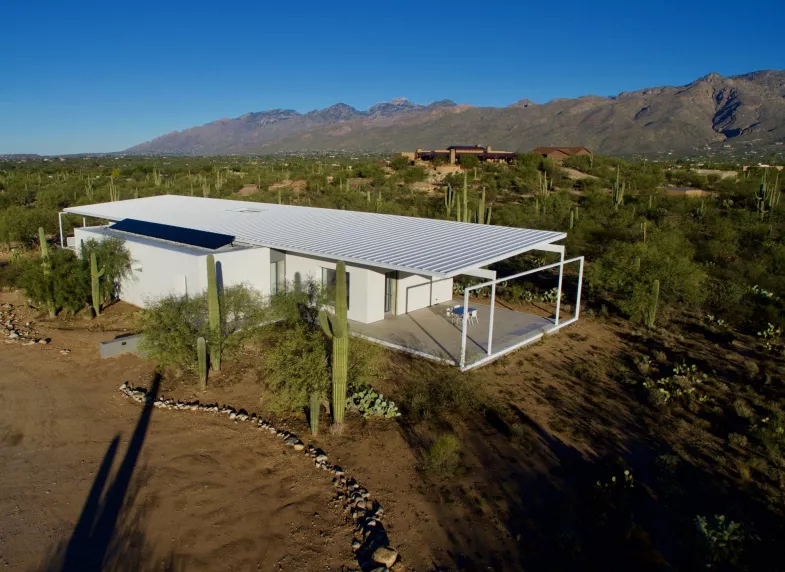
David Brubaker, a Phius Certified Consultant (CPHC®) from Chicago, built his Phius Certified home in the Sonoran desert outside of Tucson, Arizona. He and his wife Anita moved there in 2020. About a year ago, I also moved out to the north end of the Sonoran Desert (Phoenix) – so David invited me to take a day trip to tour his home and guest lecture for a studio course he teaches at the University of Arizona on “climate-positive details.”
Fun fact: David and I were also in the same CPHC class in Urbana, Illinois, almost 11 years ago.
David’s home achieved Design Certification in December of 2016 and was one of the projects I reviewed during my time as Phius Project Certification Manager. It was definitely the first project I’d seen in Climate Zone 2B (Hot-Dry), and it remains one of the few Certified in this climate zone to date! I remember the design and models well, and visiting something you’ve only seen on paper (and in an energy model) is pretty special.
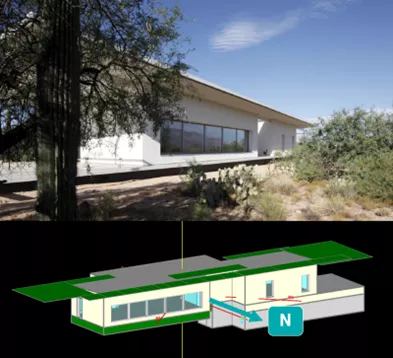
First off, arriving at the property, the landscape is beautiful. It’s located on the outskirts of the city of Tucson in the Catalina Foothills at the base of Mt. Lemmon – a nearby peak which, believe it or not, gets snow in the winter and is the southernmost ski destination in the United States. Saguaro cacti and mesquite trees are widespread in the region.
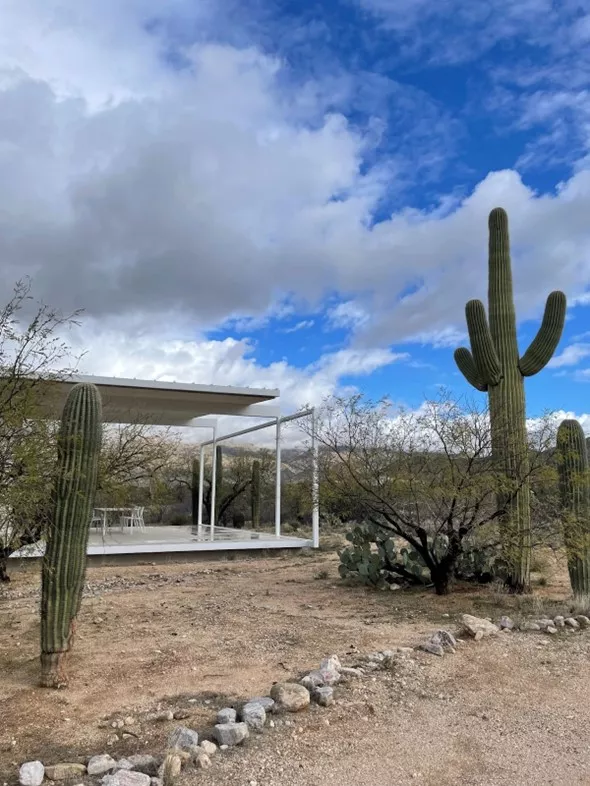
The property is quiet and the home sits nicely within its natural habitat and vegetation. There are large overhangs over expansive outdoor patio spaces on both the east and west sides, with mountain views to the north. There are more modest overhangs to the north and south, and yes, in this climate north overhangs even help prevent overheating!
See the image below captured by the owner of the north overhang effectiveness on a summer morning (July 8 at 6:25 a.m., 73°F, to reach 100°F later that day).
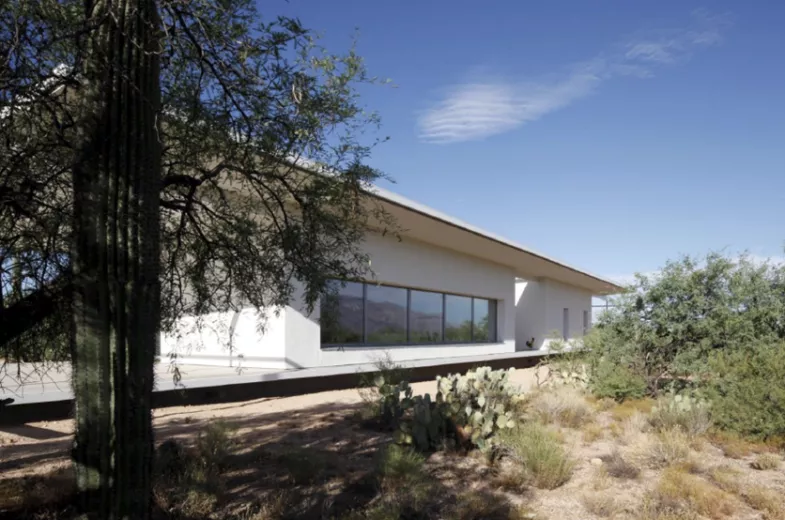
The inside is sleek and simple - with smooth, white surfaces, clean edges, and all ventilation diffusers and lighting recessed in the ceiling, out of sight.
The garage is tucked under the house and not part of the certified enclosure, but is partially insulated. Even so, I’m told it gets very hot during the summer because the ground is no refuge in the desert and is barely cooler than the outdoor air (and the outdoor air is, well, very hot).
For those not familiar with the Tucson climate, in the winter, the lowest lows are in the 40s (°F) and the summer highs are consistently around 100°F.
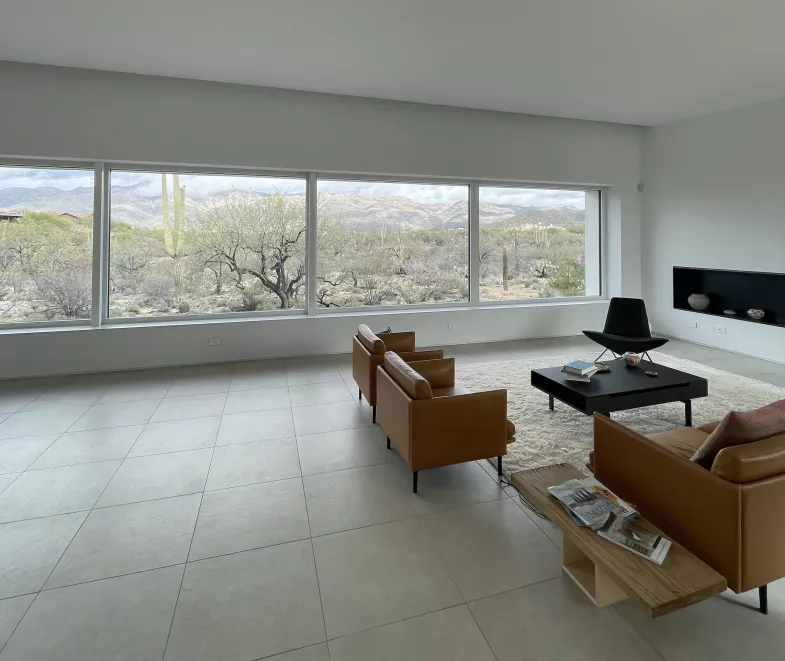
At a glance, the wall system is fairly typical, with a framed cavity full of mineral wool batts, ZIP sheathing to provide air and vapor control, and rigid mineral board on the exterior. But, it goes a bit further than your traditional high-performance design, with a focus on flushing heat through a wide (1’) air gap built outboard of the rigid insulation layer, intended to temper the air that the insulation is exposed to. That additional structure also helps shade the windows, providing deep overhang and reveal shading on the glass.
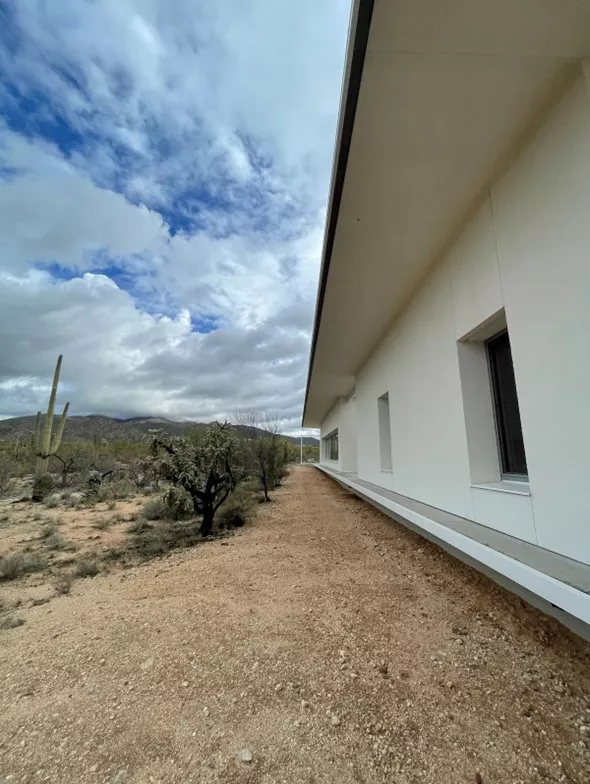
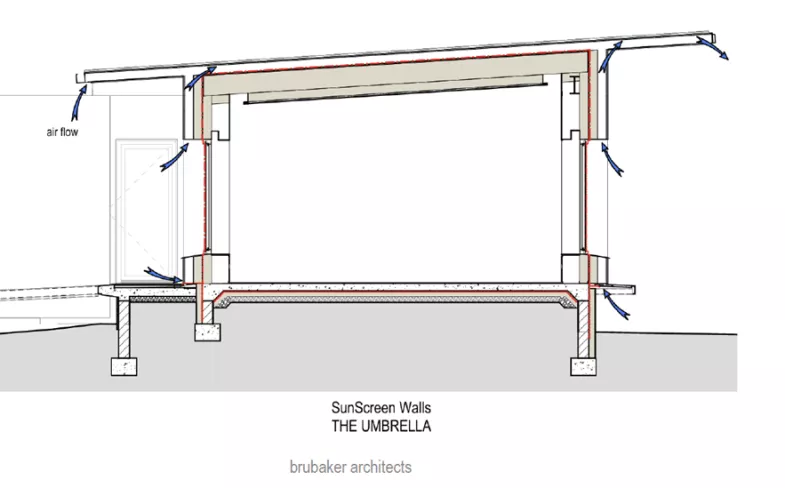
The ventilation channel on the exterior of the walls connected to the ventilation gap above the roof insulation, which was also cavity with mineral wool.
The slab was equipped with under-slab EPS insulation, and the owner concluded that while it was debated during the design, it is indeed beneficial in this climate.
The enclosure reached a measured airtightness test result that is half of the Phius’ stringent limit, coming in at 0.027 CFM50/ft2!
The home is all electric. It employs a continuous, balanced ventilation system – typical for a Phius Certified project.
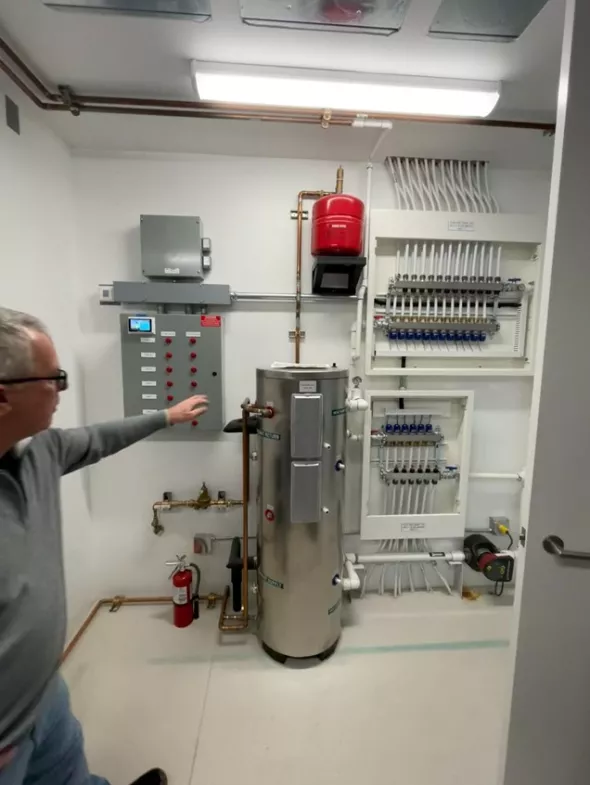
For heating and cooling, a radiant system is used, which is mostly only possible in a dry climate. However, they have a supplemental dehumidification system installed because the radiant cooling system is so sensitive to humidity level in the space. During monsoon season (late summer), the dewpoint of the incoming air can get quite high, making it challenging to manage the moisture content in the air. For this reason, they also added a chilled water coil from the radiant system on the incoming air stream of the energy recovery ventilator (ERV) and onto the supply side of the dehumidifier. (With radiant systems, if the moisture content of the inside air gets too high, it’ll condense on the distribution network and can cause a lot of issues!).
Upon Certification, they had installed enough PV to cover about half of their annual energy consumption and have since increased it to 10 kW, enough to reach annual net zero.
David installed extensive monitoring systems, both for energy performance and temperature sensors in the walls to see how the large cavity installed for "heat flushing" was working.
In the wall air cavities, monitored data showed that when direct sunlight hit the exterior stucco, the air cavity stayed cooler than the outside temperature and cooler than the temperature at the face of the exterior stucco, proving that the air space was effective in venting out excess heat.
Inboard of the 6” of rigid mineral board, the temperatures stayed steady and smooth, barely responding to changes in outdoor temperature, shielding the radiant system from harsh peaks. [Detailed graphs from the temperature loggers can be found in the link to the slide deck below].
David and Anita continue to strive for more sustainability on their site. As we know, water can be a scarce resource in the desert. They currently collect rainwater on site through bioswales that are used to water the landscape and plan to add a large rainwater collector on site soon.
All in all, it was a great tour and great to see firsthand that the passive principles work in all climates, even in the middle of the desert.
You can view more images and monitored data on this project by viewing these slides from David’s presentation at PhiusCon 2023.